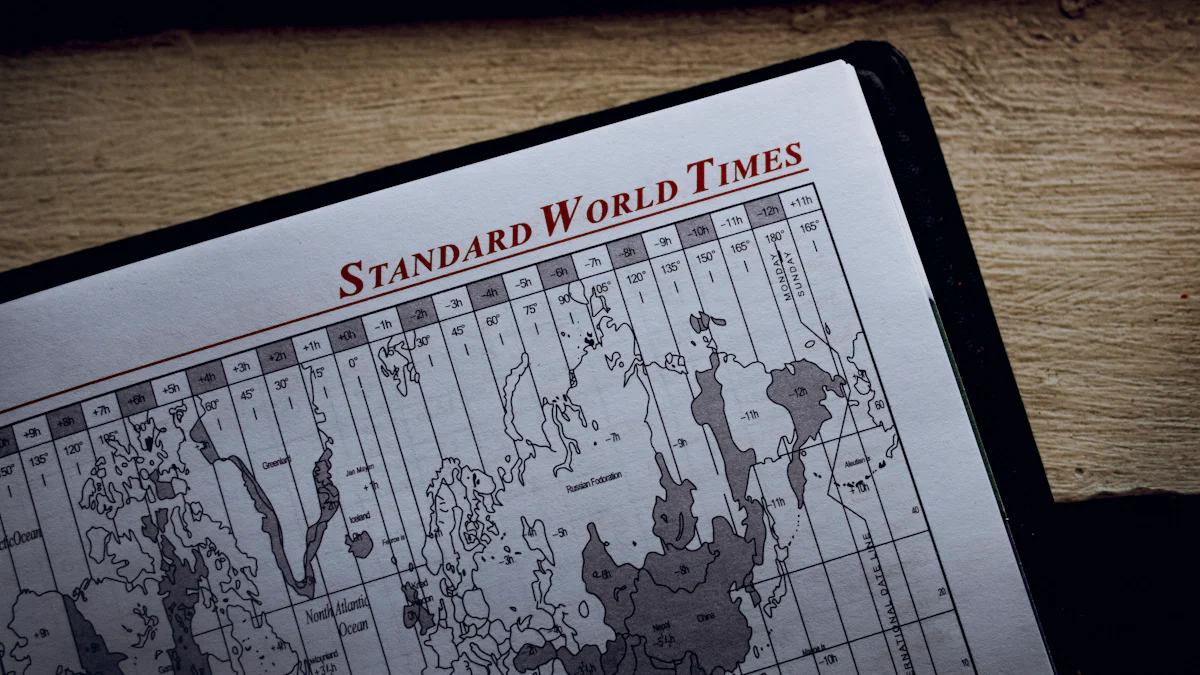
Effective Strategies for Handling Time Zone Differences in Nearshore Collaboration
When engaging in nearshore collaboration, time zone differences can pose significant challenges. However, with the right strategies in place, these challenges can be effectively managed.
Add Block
Establishing clear communication channels is crucial to ensure smooth collaboration across different time zones. This involves selecting appropriate communication tools that support real-time interaction and are compatible across various time zones. Additionally, it is important to establish communication protocols that define preferred methods of communication and set expectations for response times.
Scheduling overlapping working hours is another effective strategy. By identifying common working hours that suit both parties, teams can facilitate real-time collaboration and minimize delays. Flexibility in work schedules should also be considered to accommodate different time zone constraints.
Leveraging technology for coordination is essential in nearshore collaboration. Project management tools can be utilized for task tracking and progress monitoring, ensuring visibility and transparency across teams. Furthermore, using time zone conversion tools helps avoid confusion and scheduling errors when planning meetings or setting deadlines.
By implementing these effective strategies, professionals engaged in nearshore collaboration can overcome time zone differences and enhance their overall productivity and efficiency.
Importance of Clear Communication Channels
In nearshore collaboration, establishing clear communication channels is paramount to ensure effective collaboration across different time zones. Clear and timely communication helps teams stay aligned, minimizes misunderstandings, and fosters a productive working environment.
Choose appropriate communication tools
Selecting the right communication tools is crucial for seamless collaboration. It is important to choose tools that support real-time communication, such as instant messaging platforms or video conferencing software. These tools enable team members to communicate in real-time, bridging the gap created by time zone differences. Additionally, it is essential to ensure compatibility across different time zones, so all team members can access and use the chosen tools without any technical limitations.
Establish communication protocols
To promote efficient collaboration, it is necessary to establish clear communication protocols. This involves defining preferred methods of communication within the team. For example, teams may choose to communicate primarily through email or project management platforms. Setting expectations for response times is also crucial to avoid delays and miscommunication. By clearly defining when team members are expected to respond to messages or requests, everyone can align their schedules accordingly and maintain effective communication throughout the collaboration.
By prioritizing clear communication channels through appropriate tool selection and well-defined protocols, nearshore teams can overcome time zone challenges and foster a collaborative environment that supports successful outcomes.
Scheduling Overlapping Working Hours
To effectively collaborate in nearshore partnerships, scheduling overlapping working hours is a key strategy to bridge time zone differences. This allows teams to have real-time communication and collaboration, enhancing productivity and efficiency.
Identify common working hours
The first step is to identify the common working hours that suit both parties involved. By finding overlapping time slots, teams can ensure that there is sufficient time for direct interaction and collaboration. It is important to consider the flexibility of work schedules to accommodate different time zones. This may involve adjusting start or end times or incorporating flexible work arrangements to maximize the overlap.
Coordinate meetings and deadlines
Once common working hours are established, it is essential to coordinate meetings and set clear deadlines. Scheduling meetings during overlapping hours ensures that all team members can actively participate and contribute their insights in real-time. Additionally, setting clear deadlines for tasks and deliverables helps avoid delays caused by time zone differences. Clear expectations regarding timelines enable efficient planning and execution across the team.
By prioritizing scheduling overlapping working hours, nearshore teams can foster better collaboration, effective decision-making, and timely completion of tasks. This approach enables seamless communication and enhances overall project success despite geographical distances.
Leveraging Technology for Coordination
In nearshore collaboration, technology plays a crucial role in overcoming time zone challenges and facilitating effective coordination among team members. By leveraging the right tools, teams can enhance communication, track progress, and ensure seamless collaboration.
Utilize project management tools
Project management tools are invaluable for coordinating tasks and monitoring progress in nearshore collaboration. These tools provide a centralized platform where team members can assign and track tasks, update project statuses, and share relevant documents. By using such tools, teams can ensure visibility and transparency across different time zones. This promotes accountability, facilitates efficient workflow management, and minimizes miscommunication or delays caused by time zone differences.
Explore time zone conversion tools
To avoid confusion and scheduling errors when planning meetings or setting deadlines across different time zones, it is essential to utilize time zone conversion tools. These tools enable teams to convert meeting times or project milestones into the respective time zones of all participants. By doing so, everyone involved can easily determine the local equivalent of a specific time or deadline. This helps prevent misunderstandings and ensures that everyone is on the same page regarding timing expectations.
By embracing technology through project management tools and utilizing time zone conversion tools, nearshore teams can streamline coordination efforts, improve efficiency, and overcome the challenges posed by geographical distances. These technological solutions enhance collaboration by providing clear visibility into project progress while minimizing potential scheduling conflicts caused by varying time zones.
Promoting Cultural Understanding and Flexibility
In nearshore collaboration, promoting cultural understanding and flexibility is essential for building strong relationships and fostering effective teamwork across different time zones. By acknowledging and adapting to cultural differences, teams can enhance communication, collaboration, and overall project success.
Learn about cultural norms
To promote cultural understanding, it is important to educate oneself about the cultural norms and practices of team members from different locations. This includes understanding how work is approached, preferred communication styles, and expectations regarding hierarchy or decision-making processes. By gaining insights into these cultural nuances, teams can adapt their communication styles accordingly. This helps avoid misunderstandings, promotes effective collaboration, and builds trust among team members.
Embrace flexibility in work arrangements
Flexibility in work arrangements is crucial when working across time zones. It involves accommodating the constraints imposed by different time zones while ensuring that all team members have a fair opportunity to contribute. This may require adjusting schedules or implementing flexible work policies that allow for staggered working hours or remote work options. Encouraging understanding and compromise among team members fosters a supportive environment where everyone feels valued and respected.
By promoting cultural understanding and embracing flexibility in work arrangements, nearshore teams can bridge the gap created by time zone differences. This leads to improved collaboration, increased productivity, and ultimately successful outcomes for the entire team.
Enhancing Collaboration Across Time Zones
In nearshore collaboration, effectively managing time zone differences is crucial for successful outcomes. By implementing strategies such as establishing clear communication channels, scheduling overlapping working hours, and leveraging technology, teams can enhance collaboration across different time zones.
Establishing clear communication channels ensures that team members can connect and collaborate seamlessly. Scheduling overlapping working hours allows for real-time interaction and decision-making. Leveraging technology improves coordination and efficiency by providing tools for task management, progress tracking, and time zone conversion.
By combining these strategies, nearshore teams can overcome the challenges posed by time zone differences and foster a collaborative environment where communication flows smoothly, deadlines are met, and project goals are achieved. With effective collaboration across time zones, organizations can leverage the benefits of global talent and achieve success in their nearshore partnerships.
Posted in Software Development





